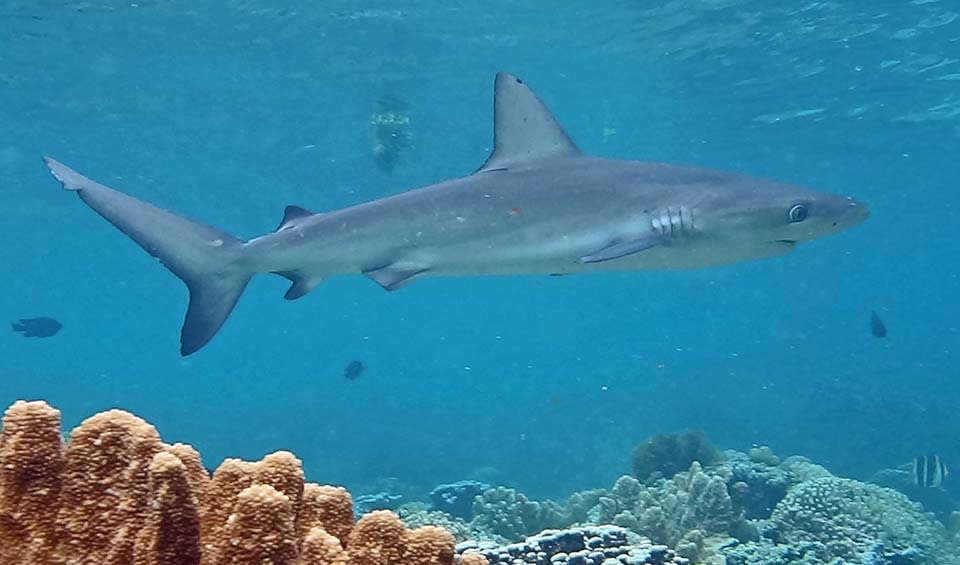A large, powerful, and sleek predator found in tropical and subtropical waters, especially around remote oceanic islands like the Galápagos Islands, where it gets its name. Its robust body, broad snout, and classic shark shape make it often mistaken for other species like the grey reef shark or dusky shark.
These sharks are top predators in their ecosystem, helping keep marine food chains balanced. They feed on a variety of prey, including bony fish, rays, and smaller sharks, using their speed and strong jaws to catch and tear into their food. They’re often seen cruising around rocky reefs, steep drop-offs, and seamounts, usually in clear, deep waters. Young sharks tend to stay in shallower, coastal areas where they’re safer from larger predators, including adult sharks of their own kind.
Galápagos sharks are known for being curious and bold, especially around unfamiliar objects or people. While they’re not considered highly dangerous to humans, their size and confidence mean they should be treated with respect. Divers occasionally encounter them in the Galápagos or around islands like Cocos (Costa Rica) and Wolf and Darwin Islands, often in groups. These encounters are thrilling for underwater photographers and shark enthusiasts because of the shark’s elegant movement and calm yet powerful presence.
Galápagos sharks give birth to live young, a process known as viviparity. After a long gestation period, females give birth to litters of up to 16 pups, which are immediately independent. Interestingly, these sharks don’t just stick to the Galápagos — they can be found near other remote islands in the Pacific and Atlantic Oceans. However, because they rely on clean, undisturbed environments and are often slow to reproduce, they’re vulnerable to overfishing and habitat destruction.
Distribution
 Atlantic Ocean
Atlantic Ocean Indian ocean
Indian ocean Pacific ocean
Pacific ocean Australia
Australia Bermuda
Bermuda Brazil
Brazil Colombia
Colombia Cook Islands
Cook Islands Ecuador
Ecuador France
France French Polynesia
French Polynesia Madagascar
Madagascar New Zealand
New Zealand Norfolk Island
Norfolk Island Panama
Panama Portugal
Portugal Saint Helena
Saint Helena Samoa
Samoa São Tomé & Príncipe
São Tomé & Príncipe United States
United StatesAnything we've missed?
Help us improve this page by suggesting edits. Glory never dies!
Suggest an editGet to know me
Terrestrial / Aquatic
Altricial / Precocial
Polygamous / Monogamous
Dimorphic (size) / Monomorphic
Active: Diurnal / Nocturnal
Social behavior: Solitary / Pack / Herd
Diet: Carnivore / Herbivore / Omnivore / Piscivorous / Insectivore
Migratory: Yes / No
Domesticated: Yes / No
Dangerous: Yes / No




